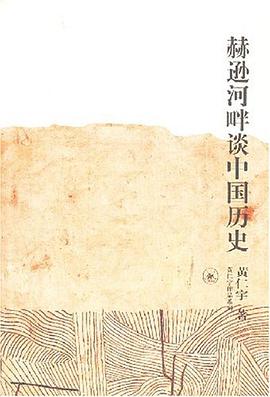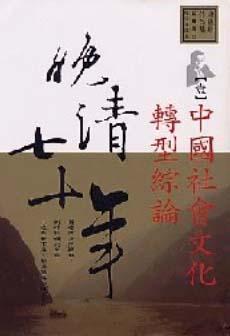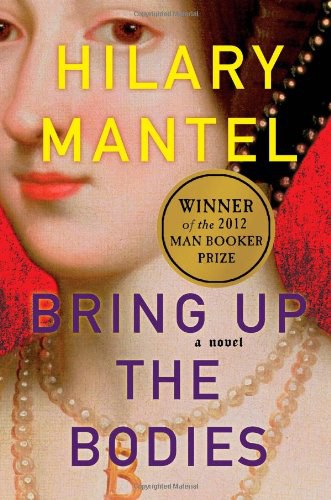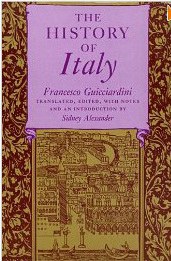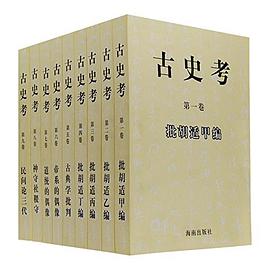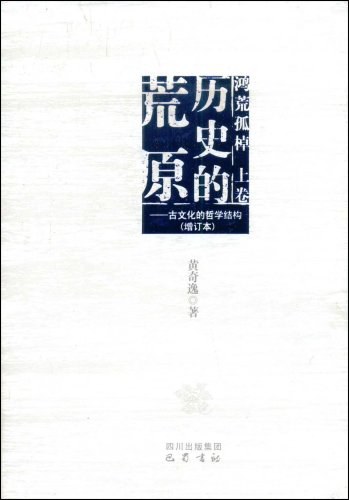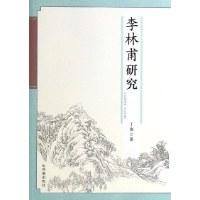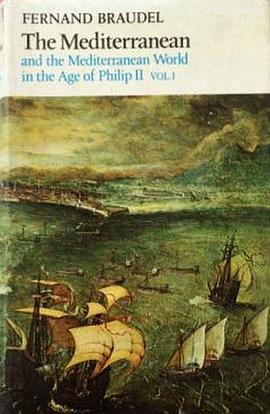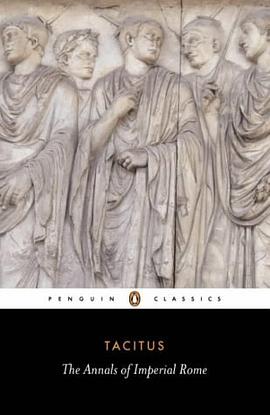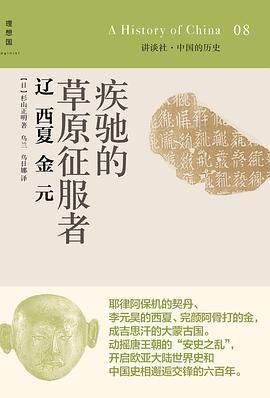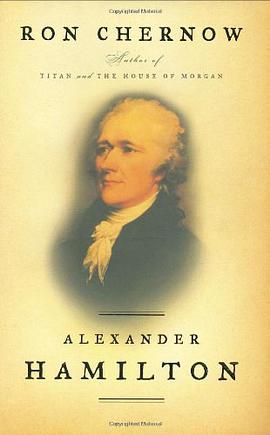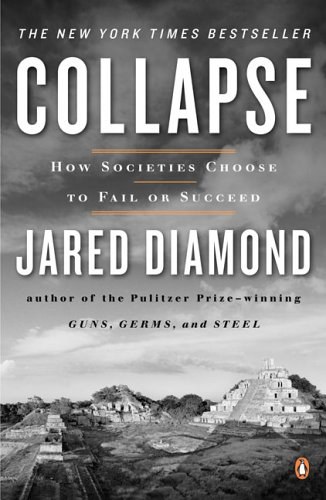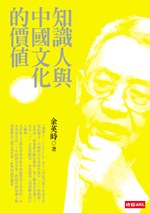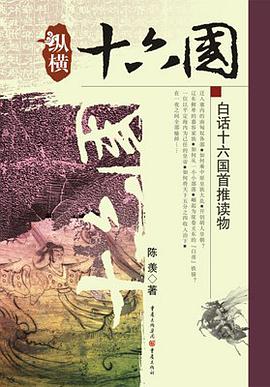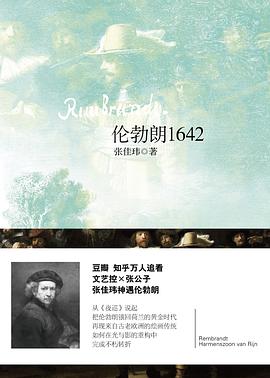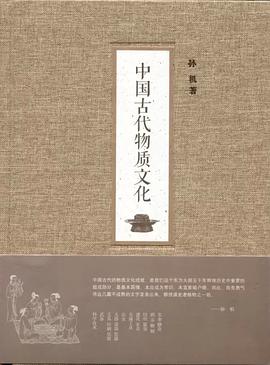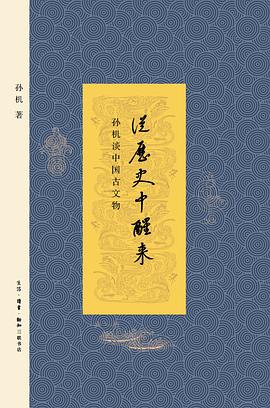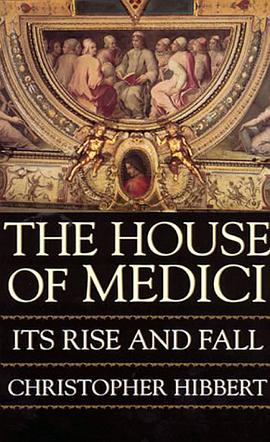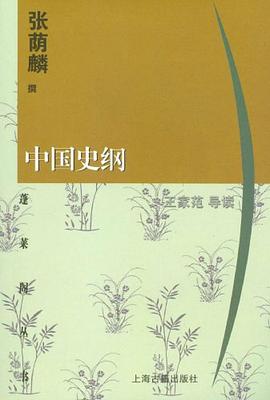历史
Bring Up the Bodies 豆瓣
8.7 (6 个评分)
作者:
Hilary Mantel
Fourth Estate
2012
- 5
Public and private passions colour the masterful sequel to ' Wolf Hall '.
The History of Italy 豆瓣
作者:
Guicciardini, Francesco
译者:
Alexander, Sidney
Princeton
1984
- 6
古史考(全9卷) 豆瓣
作者:
彭振坤 主编
海南出版社
2003
《古史考》九卷是中华人民共和国成立以来有关中国古典学的专题论文集,旨在展示1949年初至2003年底54年间中国古典学的重大进展和前沿成果。“古史考”是一个普通的名字,三国时期谯周曾著《古史考》,现在之所以还采用这一普通的名字,是希望有较强的包容性。读者可以发现《古史考》各卷都有不用观点的激烈交锋。列宁称赞马克思“凡人类思想所建树出的一切,他都重新探讨过,批判过。”“马克思认为他的理论底"价值全在于这个理论‘根本上就是批判的和革命的理论’。”我国马克思主义史学的创始人郭沫若先生将他研究诸子百家的专著取名《十批判书》,还提倡自我批判,显然继承了马克思主义经典作家的批判精神。我们现在站在巨人的肩膀上,对中国古典学作批判性的研究、结账式的整理,此《古史考》之所以兴也。
在20世纪初新文化运动的激荡下,人们重新发现了清代崔述的《考信录》。作为新文化运动的领袖、古史辨运动的引路人,胡适主张“疑而后信,考而后信”,《古史辨》七册可以说是“疑而后信”的结晶,成为古史辨运动的标志性出版物,而现在的《古史考》九卷,可以说是倡演“考而后信”。古云“万物并育而不相害,道并行而不相悖”,此亦《古史考》之所以兴也。
在20世纪初新文化运动的激荡下,人们重新发现了清代崔述的《考信录》。作为新文化运动的领袖、古史辨运动的引路人,胡适主张“疑而后信,考而后信”,《古史辨》七册可以说是“疑而后信”的结晶,成为古史辨运动的标志性出版物,而现在的《古史考》九卷,可以说是倡演“考而后信”。古云“万物并育而不相害,道并行而不相悖”,此亦《古史考》之所以兴也。
历史的荒原 豆瓣
作者:
黄奇逸
巴蜀书社
2008
《历史的荒原:古文化的哲学结构(增订本)》对炎黄文化是一种新的认识体系。以前,学术界认识中国上古文化,主要从物质的角度着眼,《历史的荒原:古文化的哲学结构(增订本)》却换成了宗教与文化精神的眼光,并调整了研究者观察古人类的时空距离。这样,《历史的荒原:古文化的哲学结构(增订本)》以全新的眼光讨论了中外古文字的源流、先秦诸子、十三经、上古政治文化等重大问题的流变,并对儒、道的实质,中国与古印度、巴比伦在语言文字、文化、宗教上的关系作了重新认识.对胡适、顾颉刚为首的“古史辨”派(包括阎若璩的《古文尚书疏证》)否定中华民族炎炎赫赫上古文化的研究方法,进行了分析性的批判。更重要的是《历史的荒原:古文化的哲学结构(增订本)》在研究的方法上有新的建立,使《历史的荒原:古文化的哲学结构(增订本)》更逼向对事物深一个层次的认识,这样,以前上古文化研究中许多无法索解的大问题,《历史的荒原:古文化的哲学结构(增订本)》中都得到了较圆满的回答。
The Mediterranean and the Mediterranean World in the Age of Philip II Vol. 1 豆瓣
作者:
Fernand Braudel
译者:
Sian Raynolds
Harper & Row
1972
The focus of Fernand Braudel's great work is the Mediterranean world in the second half of the sixteenth century, but Braudel ranges back in history to the world of Odysseus and forward to our time, moving out from the Mediterranean area to the New World and other destinations of Mediterranean traders. Braudel's scope embraces the natural world and material life, economics, demography, politics, and diplomacy.
The Annals of Imperial Rome 豆瓣
作者:
Tacitus
译者:
Michael Grant
Penguin Classics
1956
- 6
Tacitus' "Annals of Imperial Rome" recount the major historical events from the years shortly before the death of Augustus up to the death of Nero in AD 68. With clarity and vivid intensity he describes the reign of terror under the corrupt Tiberius, the great fire of Rome during the time of Nero, and the wars, poisonings, scandals, conspiracies and murders that were part of imperial life. Despite his claim that the Annals were written objectively, Tacitus' account is sharply critical of the emperors' excesses and fearful for the future of Imperial Rome, while also filled with a longing for its past glories.
疾驰的草原征服者:辽 西夏 金 元 豆瓣
疾駆する草原の征服者: 遼 西夏 金 元
7.7 (18 个评分)
作者:
(日)杉山正明
译者:
乌兰
广西师范大学出版社
2014
- 2
本书是日本讲谈社“中国的历史”系列“辽 西夏 金 元”一卷。
《中国的历史》为日本讲谈社百周年献礼之作,是日本历史学家写给大众的中国通史读本。丛书自上古到近代,内容含概量大,撰述者均为日本该领域的代表性学者,作品大多构思巧妙,写法轻松,观点新颖,富于洞见,但同时又吸取了近些年来的诸多学术成果,利用了最新出土的史料,是一套可读性与严肃性兼备的重磅历史佳作。
本卷由日本学界该研究领域内的专家杉山正明撰写,复旦大学教授姚大力推荐,直接涉及的是9世纪后半期至14世纪末大约五百年间的历史。作者没有像中国人通常惯于接受的那样,依照“唐—五代—两宋—元”的历史变迁主线来呈现公元10到14世纪的中国史;相反,被很多人想当然地看做是阻断、破坏了本应由两宋来实现的国家统一大业的夏、辽与金,不再仅仅是出现在音乐正剧里的几段不和谐的变奏或插曲,而都在本书中担当起积极和正面的主要角色,由它们来贯穿从唐到元这一时段的中国史进程,作者认为本书所涉五百年乃至六百年间历史的整个进程,正是开启欧亚大陆世界史和中国史邂逅、交锋的六百年。
《中国的历史》为日本讲谈社百周年献礼之作,是日本历史学家写给大众的中国通史读本。丛书自上古到近代,内容含概量大,撰述者均为日本该领域的代表性学者,作品大多构思巧妙,写法轻松,观点新颖,富于洞见,但同时又吸取了近些年来的诸多学术成果,利用了最新出土的史料,是一套可读性与严肃性兼备的重磅历史佳作。
本卷由日本学界该研究领域内的专家杉山正明撰写,复旦大学教授姚大力推荐,直接涉及的是9世纪后半期至14世纪末大约五百年间的历史。作者没有像中国人通常惯于接受的那样,依照“唐—五代—两宋—元”的历史变迁主线来呈现公元10到14世纪的中国史;相反,被很多人想当然地看做是阻断、破坏了本应由两宋来实现的国家统一大业的夏、辽与金,不再仅仅是出现在音乐正剧里的几段不和谐的变奏或插曲,而都在本书中担当起积极和正面的主要角色,由它们来贯穿从唐到元这一时段的中国史进程,作者认为本书所涉五百年乃至六百年间历史的整个进程,正是开启欧亚大陆世界史和中国史邂逅、交锋的六百年。
Alexander Hamilton 豆瓣
9.8 (8 个评分)
作者:
Ron Chernow
The Penguin Press
2004
- 4
From National Book Award winner Ron Chernow, a landmark biography of Alexander Hamilton, the Founding Father who galvanized, inspired, scandalized, and shaped the newborn nation.
Ron Chernow, whom the New York Times called "as elegant an architect of monumental histories as we've seen in decades," now brings to startling life the man who was arguably the most important figure in American history, who never attained the presidency, but who had a far more lasting impact than many who did.
An illegitimate, largely self-taught orphan from the Caribbean, Hamilton rose with stunning speed to become George Washington's aide-de-camp, a member of the Constitutional Convention, coauthor of The Federalist Papers , leader of the Federalist party, and the country's first Treasury secretary. With masterful storytelling skills, Chernow presents the whole sweep of Hamilton's turbulent life: his exotic, brutal upbringing; his brilliant military, legal, and financial exploits; his titanic feuds with Jefferson, Madison, Adams, and Monroe; his illicit romances; and his famous death in a duel with Aaron Burr in July 1804.
For the first time, Chernow captures the personal life of this handsome, witty, and perennially controversial genius and explores his poignant relations with his wife Eliza, their eight children, and numberless friends. This engrossing narrative will dispel forever the stereotype of the Founding Fathers as wooden figures and show that, for all their greatness, they were fiery, passionate, often flawed human beings.
Alexander Hamilton was one of the seminal figures in our history. His richly dramatic saga, rendered in Chernow's vivid prose, is nothing less than a riveting account of America's founding, from the Revolutionary War to the rise of the first federal government.
Ron Chernow, whom the New York Times called "as elegant an architect of monumental histories as we've seen in decades," now brings to startling life the man who was arguably the most important figure in American history, who never attained the presidency, but who had a far more lasting impact than many who did.
An illegitimate, largely self-taught orphan from the Caribbean, Hamilton rose with stunning speed to become George Washington's aide-de-camp, a member of the Constitutional Convention, coauthor of The Federalist Papers , leader of the Federalist party, and the country's first Treasury secretary. With masterful storytelling skills, Chernow presents the whole sweep of Hamilton's turbulent life: his exotic, brutal upbringing; his brilliant military, legal, and financial exploits; his titanic feuds with Jefferson, Madison, Adams, and Monroe; his illicit romances; and his famous death in a duel with Aaron Burr in July 1804.
For the first time, Chernow captures the personal life of this handsome, witty, and perennially controversial genius and explores his poignant relations with his wife Eliza, their eight children, and numberless friends. This engrossing narrative will dispel forever the stereotype of the Founding Fathers as wooden figures and show that, for all their greatness, they were fiery, passionate, often flawed human beings.
Alexander Hamilton was one of the seminal figures in our history. His richly dramatic saga, rendered in Chernow's vivid prose, is nothing less than a riveting account of America's founding, from the Revolutionary War to the rise of the first federal government.
Collapse 豆瓣 Goodreads
作者:
Jared Diamond
Penguin Books
2005
Book Description
In this fascinating book, Diamond seeks to understand the fates of past societies that collapsed for ecological reasons, combining the most important policy debate of this generation with the romance and mystery of lost worlds.
Amazon.com
Jared Diamond's Collapse: How Societies Choose to Fail or Succeed is the glass-half-empty follow-up to his Pulitzer Prize-winning Guns, Germs, and Steel. While Guns, Germs, and Steel explained the geographic and environmental reasons why some human populations have flourished, Collapse uses the same factors to examine why ancient societies, including the Anasazi of the American Southwest and the Viking colonies of Greenland, as well as modern ones such as Rwanda, have fallen apart. Not every collapse has an environmental origin, but an eco-meltdown is often the main catalyst, he argues, particularly when combined with society's response to (or disregard for) the coming disaster. Still, right from the outset of Collapse, the author makes clear that this is not a mere environmentalist's diatribe. He begins by setting the book's main question in the small communities of present-day Montana as they face a decline in living standards and a depletion of natural resources. Once-vital mines now leak toxins into the soil, while prion diseases infect some deer and elk and older hydroelectric dams have become decrepit. On all these issues, and particularly with the hot-button topic of logging and wildfires, Diamond writes with equanimity.
Because he's addressing such significant issues within a vast span of time, Diamond can occasionally speak too briefly and assume too much, and at times his shorthand remarks may cause careful readers to raise an eyebrow. But in general, Diamond provides fine and well-reasoned historical examples, making the case that many times, economic and environmental concerns are one and the same. With Collapse, Diamond hopes to jog our collective memory to keep us from falling for false analogies or forgetting prior experiences, and thereby save us from potential devastations to come. While it might seem a stretch to use medieval Greenland and the Maya to convince a skeptic about the seriousness of global warming, it's exactly this type of cross-referencing that makes Collapse so compelling.
--Jennifer Buckendorff
From Publishers Weekly
In his Pulitzer Prize–winning bestseller Guns, Germs, and Steel, geographer Diamond laid out a grand view of the organic roots of human civilizations in flora, fauna, climate and geology. That vision takes on apocalyptic overtones in this fascinating comparative study of societies that have, sometimes fatally, undermined their own ecological foundations. Diamond examines storied examples of human economic and social collapse, and even extinction, including Easter Island, classical Mayan civilization and the Greenland Norse. He explores patterns of population growth, overfarming, overgrazing and overhunting, often abetted by drought, cold, rigid social mores and warfare, that lead inexorably to vicious circles of deforestation, erosion and starvation prompted by the disappearance of plant and animal food sources. Extending his treatment to contemporary environmental trouble spots, from Montana to China to Australia, he finds today's global, technologically advanced civilization very far from solving the problems that plagued primitive, isolated communities in the remote past. At times Diamond comes close to a counsel of despair when contemplating the environmental havoc engulfing our rapidly industrializing planet, but he holds out hope at examples of sustainability from highland New Guinea's age-old but highly diverse and efficient agriculture to Japan's rigorous program of forest protection and, less convincingly, in recent green consumerism initiatives. Diamond is a brilliant expositor of everything from anthropology to zoology, providing a lucid background of scientific lore to support a stimulating, incisive historical account of these many declines and falls. Readers will find his book an enthralling, and disturbing, reminder of the indissoluble links that bind humans to nature. Photos.
From Booklist
Defining collapse as "extreme decline," the Pulitzer Prize-winning author of Guns, Germs, and Steel (1997), which posed questions about Western civilization's domination of much of the world, now examines the reverse side of that coin. Diamond ponders reasons why certain civilizations have collapsed. With an eye on the implications for the present and future, he bases his analysis on his newly phrased version of an old maxim about what history teaches: "The past offers us a rich database from which we can learn." Drawing examples from this database, from Polynesian culture on Easter Island to the Viking outposts in Greenland to the Mayan civilization in Central America, the author finds "the fundamental pattern of catastrophe" that is apparent in these populations that once flourished and then collapsed. The template he holds up is a construct based on five factors, including environmental damage, climate change, and hostile neighbors. In addition, Diamond casts his critical but acute and inclusive gaze on the issue of why civilizations fail to see collapse coming. A thought-provoking book containing not a single page of dense prose. Expect demand from civic- and history-minded readers.
Brad Hooper
From School Library Journal
Adult/High School–This powerful call to action should be read by all high school students. Diamond eloquently and persuasively describes the environmental and social problems that led to the collapse of previous civilizations and threaten us today. The book's organization makes researching particular regions or types of damage accessible. Unfamiliar words are defined, and mention of a place or issue that has been described in greater detail elsewhere includes relevant page numbers. Students may become impatient with the folksy Montana fishing stories in part one, but once the fascinating account of the vanished civilizations begins, readers are taken on an extraordinary journey. Using the Mayan empire, Easter Island, the Anasazi, and other examples, the author shows how a combination of environmental factors such as habitat destruction, the loss of biodiversity, and degradation of the soil caused complex, flourishing societies to suddenly disintegrate. Modern societies are divided into those that have begun to collapse, such as Rwanda and Haiti; those whose conservation policies have helped to avert disaster, such as Iceland and Japan; and those currently dealing with massive problems, such as Australia and China. Diamond is a cautious optimist. Some of his most compelling stories show how two groups of people sharing the same land, such as the Norse and Inuit in Greenland, can end up in completely different situations depending on how they address their problems. The solutions discussed are of vital importance: how societies respond to environmental degradation will determine how teens will live their adult lives. As Diamond points out, in a collapsing civilization, being rich just means being the last to starve. Black-and-white photos are included.
–Kathy Tewell, Fairfax County Public Library, VA
Book Dimension
length: (cm)21.7 width:(cm)14
In this fascinating book, Diamond seeks to understand the fates of past societies that collapsed for ecological reasons, combining the most important policy debate of this generation with the romance and mystery of lost worlds.
Amazon.com
Jared Diamond's Collapse: How Societies Choose to Fail or Succeed is the glass-half-empty follow-up to his Pulitzer Prize-winning Guns, Germs, and Steel. While Guns, Germs, and Steel explained the geographic and environmental reasons why some human populations have flourished, Collapse uses the same factors to examine why ancient societies, including the Anasazi of the American Southwest and the Viking colonies of Greenland, as well as modern ones such as Rwanda, have fallen apart. Not every collapse has an environmental origin, but an eco-meltdown is often the main catalyst, he argues, particularly when combined with society's response to (or disregard for) the coming disaster. Still, right from the outset of Collapse, the author makes clear that this is not a mere environmentalist's diatribe. He begins by setting the book's main question in the small communities of present-day Montana as they face a decline in living standards and a depletion of natural resources. Once-vital mines now leak toxins into the soil, while prion diseases infect some deer and elk and older hydroelectric dams have become decrepit. On all these issues, and particularly with the hot-button topic of logging and wildfires, Diamond writes with equanimity.
Because he's addressing such significant issues within a vast span of time, Diamond can occasionally speak too briefly and assume too much, and at times his shorthand remarks may cause careful readers to raise an eyebrow. But in general, Diamond provides fine and well-reasoned historical examples, making the case that many times, economic and environmental concerns are one and the same. With Collapse, Diamond hopes to jog our collective memory to keep us from falling for false analogies or forgetting prior experiences, and thereby save us from potential devastations to come. While it might seem a stretch to use medieval Greenland and the Maya to convince a skeptic about the seriousness of global warming, it's exactly this type of cross-referencing that makes Collapse so compelling.
--Jennifer Buckendorff
From Publishers Weekly
In his Pulitzer Prize–winning bestseller Guns, Germs, and Steel, geographer Diamond laid out a grand view of the organic roots of human civilizations in flora, fauna, climate and geology. That vision takes on apocalyptic overtones in this fascinating comparative study of societies that have, sometimes fatally, undermined their own ecological foundations. Diamond examines storied examples of human economic and social collapse, and even extinction, including Easter Island, classical Mayan civilization and the Greenland Norse. He explores patterns of population growth, overfarming, overgrazing and overhunting, often abetted by drought, cold, rigid social mores and warfare, that lead inexorably to vicious circles of deforestation, erosion and starvation prompted by the disappearance of plant and animal food sources. Extending his treatment to contemporary environmental trouble spots, from Montana to China to Australia, he finds today's global, technologically advanced civilization very far from solving the problems that plagued primitive, isolated communities in the remote past. At times Diamond comes close to a counsel of despair when contemplating the environmental havoc engulfing our rapidly industrializing planet, but he holds out hope at examples of sustainability from highland New Guinea's age-old but highly diverse and efficient agriculture to Japan's rigorous program of forest protection and, less convincingly, in recent green consumerism initiatives. Diamond is a brilliant expositor of everything from anthropology to zoology, providing a lucid background of scientific lore to support a stimulating, incisive historical account of these many declines and falls. Readers will find his book an enthralling, and disturbing, reminder of the indissoluble links that bind humans to nature. Photos.
From Booklist
Defining collapse as "extreme decline," the Pulitzer Prize-winning author of Guns, Germs, and Steel (1997), which posed questions about Western civilization's domination of much of the world, now examines the reverse side of that coin. Diamond ponders reasons why certain civilizations have collapsed. With an eye on the implications for the present and future, he bases his analysis on his newly phrased version of an old maxim about what history teaches: "The past offers us a rich database from which we can learn." Drawing examples from this database, from Polynesian culture on Easter Island to the Viking outposts in Greenland to the Mayan civilization in Central America, the author finds "the fundamental pattern of catastrophe" that is apparent in these populations that once flourished and then collapsed. The template he holds up is a construct based on five factors, including environmental damage, climate change, and hostile neighbors. In addition, Diamond casts his critical but acute and inclusive gaze on the issue of why civilizations fail to see collapse coming. A thought-provoking book containing not a single page of dense prose. Expect demand from civic- and history-minded readers.
Brad Hooper
From School Library Journal
Adult/High School–This powerful call to action should be read by all high school students. Diamond eloquently and persuasively describes the environmental and social problems that led to the collapse of previous civilizations and threaten us today. The book's organization makes researching particular regions or types of damage accessible. Unfamiliar words are defined, and mention of a place or issue that has been described in greater detail elsewhere includes relevant page numbers. Students may become impatient with the folksy Montana fishing stories in part one, but once the fascinating account of the vanished civilizations begins, readers are taken on an extraordinary journey. Using the Mayan empire, Easter Island, the Anasazi, and other examples, the author shows how a combination of environmental factors such as habitat destruction, the loss of biodiversity, and degradation of the soil caused complex, flourishing societies to suddenly disintegrate. Modern societies are divided into those that have begun to collapse, such as Rwanda and Haiti; those whose conservation policies have helped to avert disaster, such as Iceland and Japan; and those currently dealing with massive problems, such as Australia and China. Diamond is a cautious optimist. Some of his most compelling stories show how two groups of people sharing the same land, such as the Norse and Inuit in Greenland, can end up in completely different situations depending on how they address their problems. The solutions discussed are of vital importance: how societies respond to environmental degradation will determine how teens will live their adult lives. As Diamond points out, in a collapsing civilization, being rich just means being the last to starve. Black-and-white photos are included.
–Kathy Tewell, Fairfax County Public Library, VA
Book Dimension
length: (cm)21.7 width:(cm)14
知識人與中國文化的價值 豆瓣
作者:
余英時
時報文化
2007
「知識人」(intellectual)是十八世紀之後才在西方出現的概念,中國則自先秦時代便有「士」的階層,並形成一個延續不斷的傳統。從士轉變為知識人,代表「士」文化的斷裂,也象徵華人價值體系的巨大轉變。
克魯格人文與社會科學終身成就獎得主余英時,以本書薈萃近三十年的研究見地,耙梳中國知識人與價值體系之間交相形塑、影響的綿密關係。* * *
本書收錄余英時在一九八○年代之後研究的菁華,論述知識人在中國的歷史淵源、意義等面向,及其流變對價值意識的影響。但本書意旨並不侷限在「過去」與「中國」;作者觀照中、西知識人在追尋真理上的差異,探討中國文化價值體系為何有其獨特性(中國知識人求「內向超越」,西方則是「外在超越」)。在西方人文研究重新檢視「現代以後」(post-modern)價值轉向的今日,本書對於瞭解華人安身立命的價值觀亦有偌大助益。
書中旁徵博引,釐清許多過去讀者可能不甚了了的見解。拿科舉制度來說,漢朝的按地區人口多寡設定各郡縣舉薦名額,因而有幾分「代議制度」的味道;宋人歐陽修、司馬光在「選賢唯才」(近似「全國聯招」)或是「逐路取人」(各地方有基本名額的保障)上,立場相左,是因為出身地域不同(歐陽為文化薈萃、中舉人數較多的江南,司馬則為風華不再的江北)。而漢朝董仲舒建請武帝「罷黜百家」,其實儒家也在罷黜之列,因為他要獨尊的是諸子百家均奉為聖典的「五經」(詩、書、禮、易、春秋),而非以「五經」為不二規臬的「儒術」。(見第八篇,〈試說科舉在中國史上的功能與意義〉)
又如,共產黨深知「士可殺,不可辱」的價值觀深植於讀書人心中,因此文革期間對於文人「只辱不殺」,目的就是要讓他們生不如死(而且自殺會禍延家人,行不得)。而幾十年來極力摧毀傳統知識人價值體系的後果,就是今日中國大陸學術剽竊、「黑心」商業屢見不鮮,被舉發時只嘆運氣好而不覺羞愧。(參見第五篇,〈價值荒原上的儒家幽靈〉)
作者更精闢指出,價值意識一方面淵源於傳統,一方面植根於生活的實踐,不是少數人可以憑空創造而強加於整個社會的。只要社會本身有其相對的獨立性--相對於國家(state)的權力而言,價值觀念的變遷也自然會找到自己的軌跡。此一見解,著實為百年未定的中西文化論辯闢出一條中道。* * *
〔編輯說明〕
余英時先生的大作《從價值系統看中國文化的現代意義》(1984年),將中國文化的現代意義予以精微的闡發和透澈的疏通,超然於全面西化和極端保守的傳統爭執之外,既不左偏右袒,也不作調人,而是提出具體、平正而圓融的看法。有識之士咸認,這篇文章即使不是百年來中西文化論辯最後的斷案,至少也是五四以降所有討論文字中見解最圓熟、立論最透闢的一篇。在台灣歷經二十餘年的淘洗,始終歷久而彌新。
時報文化出版公司本計畫推出《從》書的第三版,因而請作者評估是否增補文字。但作者重新思考該書的主旨,繼而就其經營數十年的研究領域——中國的「士」文化,選出另外十篇文字,將「知識人」與「文化價值」列於同等重要的位置。原因何在?因為就中國傳統而言,價值系統的整理、提煉、闡明等任務,一直是由「士」來擔任。這一增補,全書篇幅增加三倍,成就了一本新作,便是《知識人與中國文化的價值》。
克魯格人文與社會科學終身成就獎得主余英時,以本書薈萃近三十年的研究見地,耙梳中國知識人與價值體系之間交相形塑、影響的綿密關係。* * *
本書收錄余英時在一九八○年代之後研究的菁華,論述知識人在中國的歷史淵源、意義等面向,及其流變對價值意識的影響。但本書意旨並不侷限在「過去」與「中國」;作者觀照中、西知識人在追尋真理上的差異,探討中國文化價值體系為何有其獨特性(中國知識人求「內向超越」,西方則是「外在超越」)。在西方人文研究重新檢視「現代以後」(post-modern)價值轉向的今日,本書對於瞭解華人安身立命的價值觀亦有偌大助益。
書中旁徵博引,釐清許多過去讀者可能不甚了了的見解。拿科舉制度來說,漢朝的按地區人口多寡設定各郡縣舉薦名額,因而有幾分「代議制度」的味道;宋人歐陽修、司馬光在「選賢唯才」(近似「全國聯招」)或是「逐路取人」(各地方有基本名額的保障)上,立場相左,是因為出身地域不同(歐陽為文化薈萃、中舉人數較多的江南,司馬則為風華不再的江北)。而漢朝董仲舒建請武帝「罷黜百家」,其實儒家也在罷黜之列,因為他要獨尊的是諸子百家均奉為聖典的「五經」(詩、書、禮、易、春秋),而非以「五經」為不二規臬的「儒術」。(見第八篇,〈試說科舉在中國史上的功能與意義〉)
又如,共產黨深知「士可殺,不可辱」的價值觀深植於讀書人心中,因此文革期間對於文人「只辱不殺」,目的就是要讓他們生不如死(而且自殺會禍延家人,行不得)。而幾十年來極力摧毀傳統知識人價值體系的後果,就是今日中國大陸學術剽竊、「黑心」商業屢見不鮮,被舉發時只嘆運氣好而不覺羞愧。(參見第五篇,〈價值荒原上的儒家幽靈〉)
作者更精闢指出,價值意識一方面淵源於傳統,一方面植根於生活的實踐,不是少數人可以憑空創造而強加於整個社會的。只要社會本身有其相對的獨立性--相對於國家(state)的權力而言,價值觀念的變遷也自然會找到自己的軌跡。此一見解,著實為百年未定的中西文化論辯闢出一條中道。* * *
〔編輯說明〕
余英時先生的大作《從價值系統看中國文化的現代意義》(1984年),將中國文化的現代意義予以精微的闡發和透澈的疏通,超然於全面西化和極端保守的傳統爭執之外,既不左偏右袒,也不作調人,而是提出具體、平正而圓融的看法。有識之士咸認,這篇文章即使不是百年來中西文化論辯最後的斷案,至少也是五四以降所有討論文字中見解最圓熟、立論最透闢的一篇。在台灣歷經二十餘年的淘洗,始終歷久而彌新。
時報文化出版公司本計畫推出《從》書的第三版,因而請作者評估是否增補文字。但作者重新思考該書的主旨,繼而就其經營數十年的研究領域——中國的「士」文化,選出另外十篇文字,將「知識人」與「文化價值」列於同等重要的位置。原因何在?因為就中國傳統而言,價值系統的整理、提煉、闡明等任務,一直是由「士」來擔任。這一增補,全書篇幅增加三倍,成就了一本新作,便是《知識人與中國文化的價值》。
伦勃朗1642 豆瓣
7.4 (7 个评分)
作者:
张佳玮
译林出版社
2014
- 7
●莫奈之后,再写伦勃朗
●艺术史达人张佳玮从最著名的《夜巡》入手
描摹生动的荷兰黄金时代市民生活
再现不为人知的欧陆绘画传统
复原光影大师伦勃朗的跌宕人生
●一书双壁=好读文本+精彩配图
开创莫奈之后新的欣赏热潮
一幅《夜巡》将荷兰美术史上最伟大的画家伦勃朗的一生分为两个截然不同的阶段:之前他被荷兰这个黄金时代的市民社会扶上太阳之巅的,之后他被这庸碌的团体揪下了地狱。“他一度和黑暗抗争,一直到了最后,他和黑暗讲了和。他的人生恰好经历了荷兰的黄金时代,他的笔触也纪录下了那一段时光里,人们可以拥有的欢欣、光明、荣耀、痛苦与黑暗。”
●艺术史达人张佳玮从最著名的《夜巡》入手
描摹生动的荷兰黄金时代市民生活
再现不为人知的欧陆绘画传统
复原光影大师伦勃朗的跌宕人生
●一书双壁=好读文本+精彩配图
开创莫奈之后新的欣赏热潮
一幅《夜巡》将荷兰美术史上最伟大的画家伦勃朗的一生分为两个截然不同的阶段:之前他被荷兰这个黄金时代的市民社会扶上太阳之巅的,之后他被这庸碌的团体揪下了地狱。“他一度和黑暗抗争,一直到了最后,他和黑暗讲了和。他的人生恰好经历了荷兰的黄金时代,他的笔触也纪录下了那一段时光里,人们可以拥有的欢欣、光明、荣耀、痛苦与黑暗。”
从历史中醒来 豆瓣
作者:
孙机
生活·读书·新知三联书店
2016
- 8
《中国古代物质文化》作者孙机新作
文物学家、考古学家孙机叙谈古代文物,唤醒沉睡在博物馆中的千 年古物,讲述古代社会生活,把涉及社会生活方方面面的基本知识介绍给读者大众。
作者在文物研究、鉴定方面造诣深湛,擅长运用文物与文献相互契合的方式和晓畅的文笔,一器一物,揭示起源与演变;既有宏观的鸟瞰,更有细节的发明。举凡历史时期的动物、饮食、武备、科技、佛教艺术,乃至杂项等中国古文物,一一复原岁月侵蚀下模糊乃至消逝了的历史场景,帮助读者通晓中国古代物质文化常识。本书以饶有兴味的专题立篇,考证得出的结论固然令人信服,剀切从容、剖肌析理的过程,也同样引人入胜。雍容平易之文,而时挟攻坚折锐之风。书中用到的数百幅线图,皆出自作者手绘,严整精细,画面生动,图文相辅,涉笔成趣。
文物学家、考古学家孙机叙谈古代文物,唤醒沉睡在博物馆中的千 年古物,讲述古代社会生活,把涉及社会生活方方面面的基本知识介绍给读者大众。
作者在文物研究、鉴定方面造诣深湛,擅长运用文物与文献相互契合的方式和晓畅的文笔,一器一物,揭示起源与演变;既有宏观的鸟瞰,更有细节的发明。举凡历史时期的动物、饮食、武备、科技、佛教艺术,乃至杂项等中国古文物,一一复原岁月侵蚀下模糊乃至消逝了的历史场景,帮助读者通晓中国古代物质文化常识。本书以饶有兴味的专题立篇,考证得出的结论固然令人信服,剀切从容、剖肌析理的过程,也同样引人入胜。雍容平易之文,而时挟攻坚折锐之风。书中用到的数百幅线图,皆出自作者手绘,严整精细,画面生动,图文相辅,涉笔成趣。
The House of Medici 豆瓣 Goodreads
作者:
Christopher Hibbert
William Morrow Paperbacks
1999
- 5
It was a dynasty with more wealth, passion, and power than the houses of Windsor, Kennedy, and Rockefeller combined. It shaped all of Europe and controlled politics, scientists, artists, and even popes, for three hundred years. It was the house of Medici, patrons of Botticelli, Michelangelo and Galileo, benefactors who turned Florence into a global power center, and then lost it all. The House of Medici picks up where Barbara Tuchman's Hibbert delves into the lives of the Medici family, whose legacy of increasing self-indulgence and sexual dalliance eventually led to its self-destruction. With twenty-four pages of black-and-white illustrations, this timeless saga is one of Quill's strongest-selling paperbacks.
